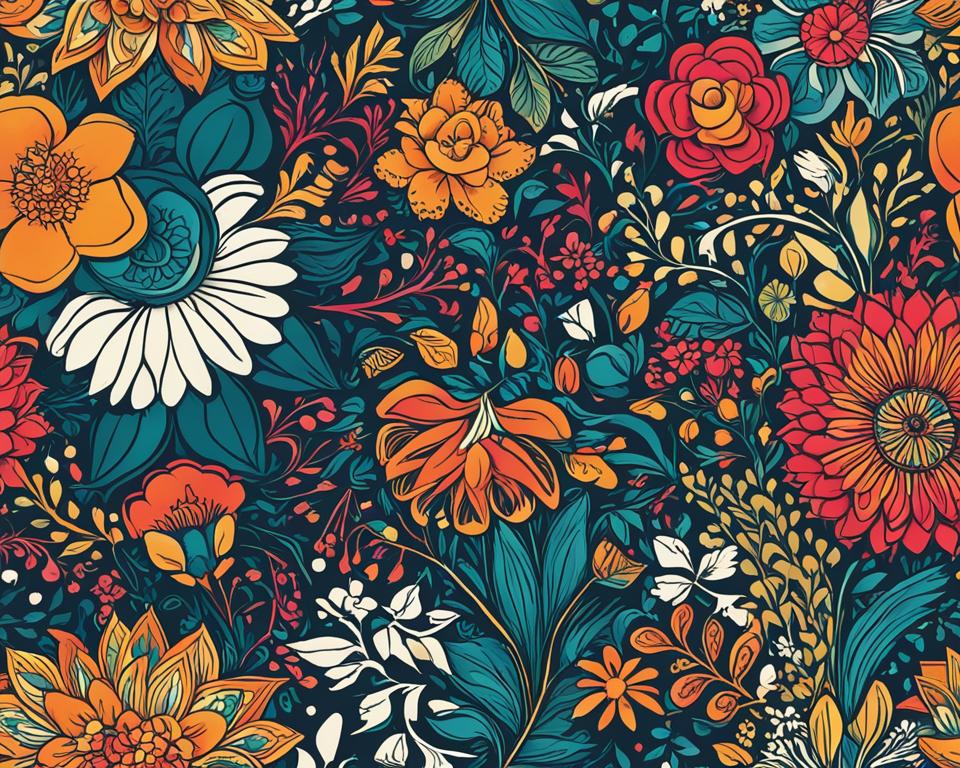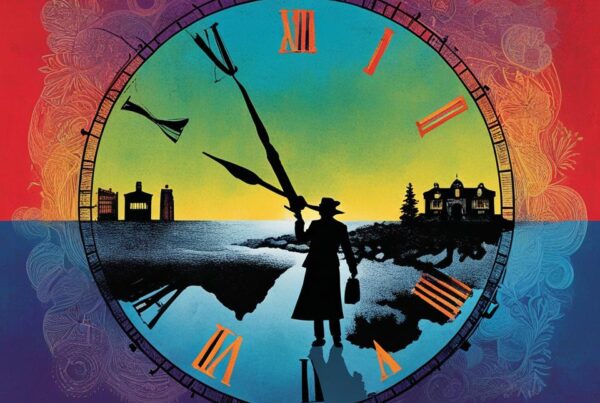Welcome to our audiobook review of “The Language of Flowers” by Vanessa Diffenbaugh. In this review, we will explore the depths of human emotion through the hidden messages found within the novel.
Vanessa Diffenbaugh’s “The Language of Flowers” is a captivating story that will leave you fully immersed in the world of the characters. We will provide a comprehensive overview of the plot, characters, and themes of the novel before delving into our review. Stick around to discover the protagonist’s journey, explore the themes and symbolism in the story, and analyze the writing and narrative style of the author. In addition, we will evaluate the audiobook performance, examine the critical reception and awards, and compare it to other works by Vanessa Diffenbaugh. Let’s begin our journey into the language of flowers.
Overview of “The Language of Flowers”
Vanessa Diffenbaugh’s “The Language of Flowers” is a novel that tells the story of Victoria, a young woman who has experienced a difficult childhood in the foster care system. The novel is divided into two different timelines, exploring both Victoria’s past experiences and her present struggles as an adult.
The plot of the novel is centered around the symbolic language of flowers, with each different flower carrying its own unique message. As Victoria navigates through life, she discovers the power of the language of flowers and uses it as a tool to express her emotions and connect with others.
The characters in “The Language of Flowers” are complex and multifaceted, with Victoria’s journey serving as the driving force behind the novel. From her turbulent childhood to her struggles with motherhood, Victoria’s story is one of resilience and growth.
The themes present in “The Language of Flowers” are wide-ranging and thought-provoking, exploring topics such as love, forgiveness, and the importance of human connection. The novel also delves into the foster care system, shedding light on the challenges faced by those who have experienced it.
Gain a deeper understanding of the story before diving into our review with this brief overview of “The Language of Flowers.”
Analysis of the Protagonist’s Journey
Victoria Jones, the protagonist of “The Language of Flowers,” embarks on a journey of self-discovery and healing. Abandoned as a child and in and out of foster care, Victoria struggles with connecting and trusting others. With the help of her mentor Elizabeth, she discovers the language of flowers and uses it to communicate her emotions and past experiences.
Throughout the novel, Victoria faces various challenges that propel her character development. She confronts her fear of maternal love through her relationship with a young girl, Renata, and learns to trust and accept love from others. Her journey also involves reconciling with her painful past and forgiving those who have hurt her.
The emotional growth experienced by Victoria is a central element of the novel’s storyline. Through our analysis, we uncover the complexity of her character and how her journey impacts the overall narrative.
Themes
The themes of love, loss, and redemption are prevalent throughout Victoria’s journey. Diffenbaugh uses the language of flowers to explore the intricacies of human emotion and how it can be difficult to express our feelings verbally. The symbolism of flowers adds depth to the narrative, with each flower representing different emotions and expressions.
| Flower | Meaning |
|---|---|
| Dahlia | Gratitude |
| Hydrangea | Heartlessness |
| Lilac | Innocence |
The novel also explores the consequences of trauma and how it shapes our identity and relationships. Victoria’s journey emphasizes the importance of healing and the power of forgiveness in moving forward.
Symbolism
Diffenbaugh employs the symbolism of flowers to depict Victoria’s emotional state and growth. The daisy chain she creates as a child represents the fleeting nature of happiness, while the calla lily symbolizes the idea of resurrection and new beginnings. The novel’s title, “The Language of Flowers,” refers to the Victorian era practice of communicating through flowers and highlights the importance of nonverbal communication and emotional expression.
By using flowers as symbols, “The Language of Flowers” provides an additional layer of depth to the narrative and allows readers to understand Victoria’s emotions on a deeper level.
Exploration of Themes and Symbolism
In “The Language of Flowers,” Vanessa Diffenbaugh masterfully weaves a complex web of themes and symbolism that imbue the story with depth and nuance. The novel explores themes of love, forgiveness, loss, and redemption through the lens of the Victorian-era language of flowers. Each flower is assigned a specific meaning, allowing characters to communicate their emotions and intentions without ever uttering a word.
One of the most prominent symbols in the novel is the thistle, which represents misanthropy and defiance. The protagonist, Victoria, identifies with the thistle due to her difficult upbringing and tendency to push people away. However, as she learns to communicate through the language of flowers, Victoria begins to soften and find connection with others.
The use of flowers as symbols in the novel also highlights the power of nature and our connection to it. As Victoria cares for and tends to her garden, she finds solace and healing from her painful past. The novel suggests that nature has the power to help us heal and connect with others.
Symbolism Table:
| Symbol | Meaning |
|---|---|
| Rose | Love |
| Tulip | Forgiveness |
| Lavender | Devotion |
| Chrysanthemum | Death |
| Thistle | Misanthropy |
The use of the language of flowers as a literary device allows Diffenbaugh to explore themes of emotion and human connection in a unique and compelling way. Through Victoria’s journey and her mastery of flower symbolism, we are reminded of the profound impact that nature and human connection can have on our lives.
Narrative Style and Writing
In “The Language of Flowers,” Vanessa Diffenbaugh employs a unique writing style that is both lyrical and emotionally evocative. The author uses flowers as a metaphor to explore the complexities of human emotions, and the narrative style reflects this theme in its dreamlike quality. Diffenbaugh’s writing is infused with rich sensory language that immerses the reader in the story, creating a vivid and atmospheric reading experience.
The pacing of the novel is deliberate, allowing time for the characters to grow and change over the course of the story. The author skillfully weaves the past and present together, revealing the protagonist’s troubled past at a measured pace. The result is a story that is both captivating and deeply moving.
Diffenbaugh’s use of symbolism and allegory is also noteworthy. The language of flowers is not only a tool for expressing emotions, but it also serves to highlight the characters’ inner turmoil and conflicts. The author’s adept use of metaphor adds a layer of depth and complexity to the story that makes it particularly compelling.

Examples of Writing Style and Symbolism
| Example | Analysis |
|---|---|
| “I could never say aloud the name of the man who had ruined me, and so it felt right to have one of his bee-ravaged trophies there on the altar, a reminder of what he had taken from me – a reminder of why I could not forget, and could not forgive.” | The use of the bee as a symbol of ruin and destruction highlights the protagonist’s trauma and the lasting impact it has had on her life. The metaphorical language of the passage draws an emotional response from the reader, inviting them to empathize with the character’s suffering. |
| “I held it out to him and was surprised when he didn’t take it. Instead, he looked off into the trees and said, ‘A bouquet is not a single flower; it’s a collection. Each flower in a bouquet brings something different to the arrangement, just as every person you love brings something different to your life.’ | This passage demonstrates the thematic importance of the language of flowers in the novel. The metaphor of a bouquet as a collection of unique individuals reflects the author’s emphasis on the value of relationships and the importance of meaningful connection in our lives. |
Audiobook Performance
The audiobook adaptation of “The Language of Flowers” by Vanessa Diffenbaugh was narrated by Tara Sands. Sands’ portrayal of the protagonist, Victoria, was moving and captivating. Her voice acting was able to convey the subtle emotions and complexities of the character’s journey.
The production quality of the audiobook was also impressive. The sound effects and music added to the overall experience of listening to the story, without distracting from the narrative.
Overall, the audiobook performance of “The Language of Flowers” was exceptional, making it a must-listen for fans of the novel or those new to the story.
Critical Reception and Awards
“The Language of Flowers” has received critical acclaim since its release, earning recognition from various literary organizations and publications. The novel was a New York Times bestseller and was even adapted into a feature film.
Vanessa Diffenbaugh’s debut novel was praised for its unique story and depiction of complex emotions. The San Francisco Chronicle called it “an amazing literary feat,” while Publishers Weekly referred to it as “a brilliantly crafted debut” and a “riveting read.”
The novel was also recognized by several literary organizations, including the Goodreads Choice Awards and the Orange Prize for Fiction.
Awards Received by “The Language of Flowers”
| Award | Category | Year |
|---|---|---|
| Orange Prize for Fiction | Shortlist | 2012 |
| Goodreads Choice Awards | Best Fiction | 2011 |
| Reading the West Award | Best Adult Fiction | 2012 |
| Ingram New Voices Award | Adult Fiction | 2011 |
| Indie Next List Selection | Pick of the Month | 2011 |
“The Language of Flowers” continues to be celebrated for its poignant exploration of the human experience and is a must-read for book lovers everywhere.
Comparison to Other Works by Vanessa Diffenbaugh
In addition to “The Language of Flowers,” Vanessa Diffenbaugh has written several other works, including “We Never Asked for Wings” and “The Lost Family.” While each novel has its unique themes and plot, they share some similarities.
Themes
Diffenbaugh’s novels explore the complexities of human relationships and the deep-seated emotions that connect us. In “The Lost Family,” we see a similar exploration of family bonds that is present in “The Language of Flowers,” while “We Never Asked for Wings” delves into the struggles of motherhood and self-acceptance.
Writing Style
Diffenbaugh’s writing evokes rich, vivid imagery, immersing readers in the emotions and experiences of her characters. Her use of the language of flowers in “The Language of Flowers” is just one example of her unique style, while her exploration of the cultural identities of her characters in “The Lost Family” showcases her versatility.
Character Development
One of Diffenbaugh’s strengths lies in her ability to create complex, multidimensional characters that readers can connect with. In “We Never Asked for Wings,” we see the growth and transformation of Letty, a character struggling to find her place in the world. Similarly, Victoria’s emotional journey in “The Language of Flowers” is a testament to Diffenbaugh’s skill in crafting relatable and compelling characters.
Overall, while each of Diffenbaugh’s works has its unique strengths and themes, there are clear similarities that make her writing instantly recognizable and beloved by fans.
Conclusion
In conclusion, Vanessa Diffenbaugh’s “The Language of Flowers” is a captivating audiobook that explores the complexity of human emotions and relationships. Through the protagonist’s journey, the novel emphasizes the importance of self-discovery and forgiveness.
Diffenbaugh’s use of the language of flowers adds richness and depth to the story, conveying emotions and messages in a symbolic way. Her narrative style and pacing keep the story engaging and thought-provoking, while the audiobook performance enhances the experience with exceptional narration and voice acting.
“The Language of Flowers” has received critical acclaim and multiple awards, cementing its place as a must-read novel. Compared to Diffenbaugh’s other works, it stands out as a unique and powerful story that leaves a lasting impact on the reader.
Overall, “The Language of Flowers” is a beautifully crafted audiobook that will touch your heart and leave you feeling inspired. We highly recommend it to anyone looking for a thought-provoking and emotionally engaging story.
FAQ
What is “The Language of Flowers” about?
“The Language of Flowers” is a novel by Vanessa Diffenbaugh that explores the power of flowers to convey emotions and messages. The story follows the journey of Victoria, a young woman who uses the language of flowers to navigate relationships and heal from a painful past.
Who is the author of “The Language of Flowers”?
“The Language of Flowers” is written by Vanessa Diffenbaugh, an American author known for her emotive and thought-provoking storytelling.
What are the main themes in “The Language of Flowers”?
“The Language of Flowers” delves into themes of love, forgiveness, redemption, and the power of human connection. It explores how flowers can serve as a universal language for expressing emotions.
Is “The Language of Flowers” available as an audiobook?
Yes, “The Language of Flowers” is available as an audiobook, allowing readers to experience the story through narration and voice acting.
How does the protagonist’s journey unfold in “The Language of Flowers”?
The protagonist, Victoria, embarks on a transformative journey of self-discovery and healing. Through her exploration of the language of flowers, she learns to understand and accept herself, as well as to form meaningful connections with others.
What is the narrative style like in “The Language of Flowers”?
Vanessa Diffenbaugh’s narrative style in “The Language of Flowers” is captivating and emotionally rich. She skillfully weaves together past and present timelines, allowing readers to delve into the depths of the characters’ emotions.
How has “The Language of Flowers” been received by critics?
“The Language of Flowers” has received widespread critical acclaim for its poignant storytelling and exploration of human emotions. It has been praised for its unique premise and heartfelt portrayal of complex characters.
Has “The Language of Flowers” won any awards?
Yes, “The Language of Flowers” has been recognized with several awards and nominations, including the Goodreads Choice Awards. Its compelling storytelling and memorable characters have cemented its place as a beloved novel.
How does “The Language of Flowers” compare to other works by Vanessa Diffenbaugh?
“The Language of Flowers” shares Vanessa Diffenbaugh’s trademark themes of love, healing, and personal growth. It showcases her ability to delve into the complexities of human relationships and the power of language.
What can I expect from the audiobook performance of “The Language of Flowers”?
The audiobook performance of “The Language of Flowers” brings the story to life through expert narration and voice acting. It enhances the emotional depth of the novel and allows listeners to fully immerse themselves in the world of Victoria and the language of flowers.
In conclusion, what is the overall impact of the audiobook version of “The Language of Flowers”?
The audiobook version of “The Language of Flowers” offers a compelling and immersive experience, capturing the essence of the novel’s emotional journey. It is a highly recommended choice for those who want to explore the captivating world of Vanessa Diffenbaugh’s storytelling.



